|
|
NOTES ON THE ORIGINS OF GIANT MANTA AND HORN - 3 Written August 2006 |
|
|
NOTES ON THE ORIGINS OF GIANT MANTA AND HORN - 3 Written August 2006 |
NAVIGATION
|
"Spanish Dancers"
It's fascinating to compare Toku's most "modern" designs with his most "rococo" carvings. I think I see a number of underlying similarities between the shapes of the vertical pairs of pipes (387 + 485 and 392 + 484), including some shared lines within their bowls and their tails: |
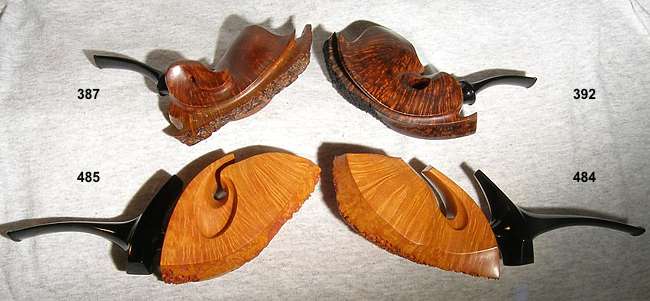
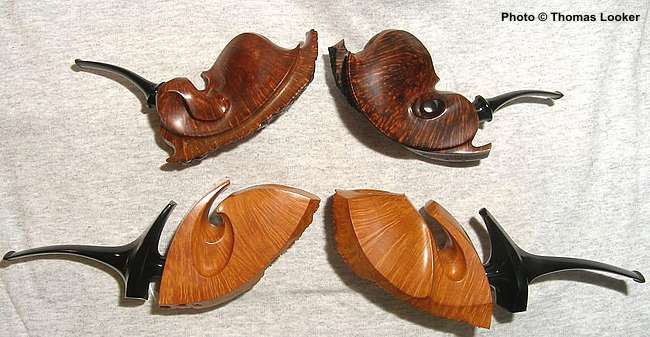
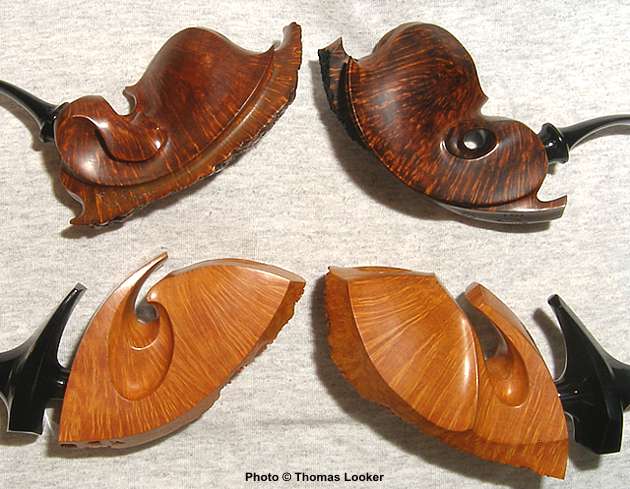
|
The "Spanish Dancers" were carved right after the development of the first Mantas and they show Toku's imagination folding his newest ideas back into their antecedents and creating yet another kind of "Manta horn" (or "Horn Manta"). The "Manta-within-the-Dancer" is most clearly visible in the footprints of 387 and 392 - the widened front, narrowed rear, and prominent central ridge, but there are other echoes as well, which I will discuss in more detail below. The Manta "beneath" SPC 387 and 392
|
|
Giant Manta and "Spanish Dancer" SPC 392 (Hiro, 2005)
Notwithstanding the more modern, simplified shapes of the Giant in comparison to the more ornate, flexible lines of this "Spanish Dancer," I see some surprising similarities within their underlying forms - especially when viewed from certain angles. To my eye, these echoes reveal their family relationship ... their shared, Manta heritage. |
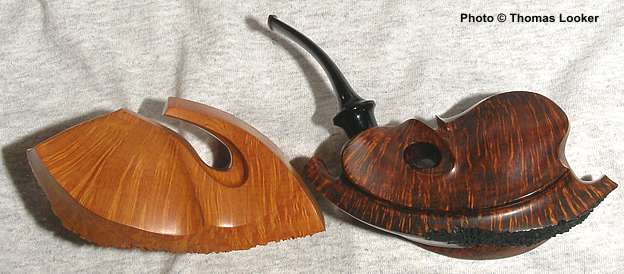
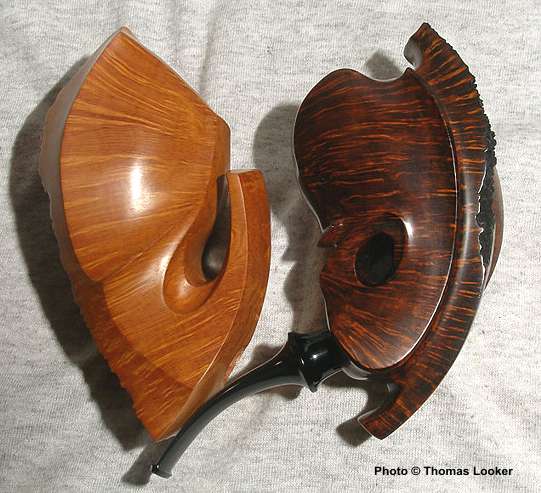
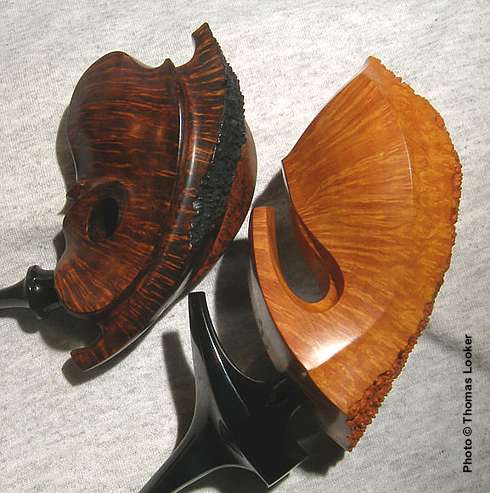
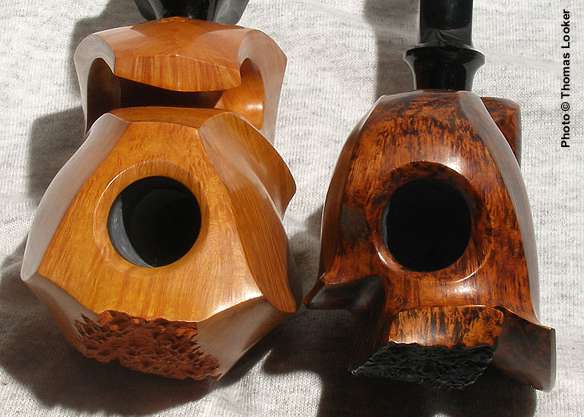
|
Note how the end of the Giant's plateau bottom seems to imply the Spanish Dancer's "goatee" (though the beard has been shaved off). |
|
The Giant's Manta-heritage is probably least obvious from the bottom, where the center ridge seems to have disappeared. Yet, if we regard the sheet of plateau as an expanded and flattened ridge - and the thin side panels as the remnants of wide, smooth base - then we may see more clearly the underlying Manta shape (wide front, narrowing middle, widening rear). |
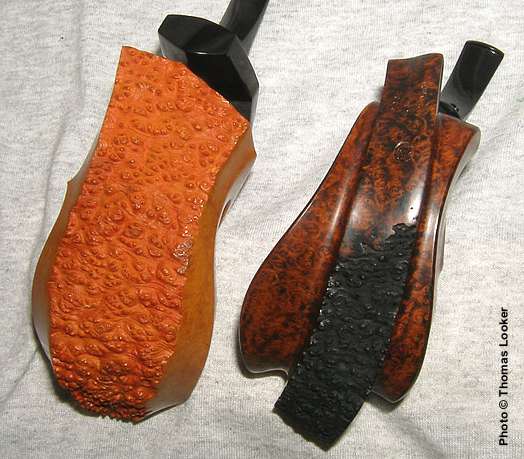
|
Giant Horn and "Spanish Dancer" SPC 387 (3 snails, 2005) At first sight, the Giant Horn and the "Spanish Dancer" (3 snails) may not seem to share any similarities. Yet behind the ornamental surfaces of the "Dancer" and the formal modernisms of the Horn, I detect imaginative resonance between the two compositions. That is to say, it seems to me that Toku was holding some common design ideas in his fingers as he shaped both pipes. I suggest some of these shared elements below (though I need more study to work out my preliminary reflections). |
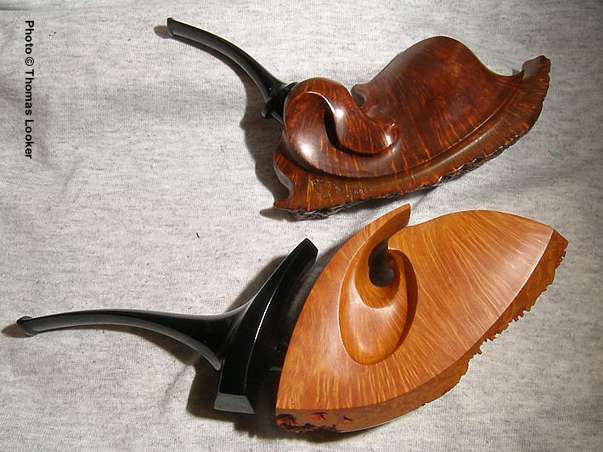
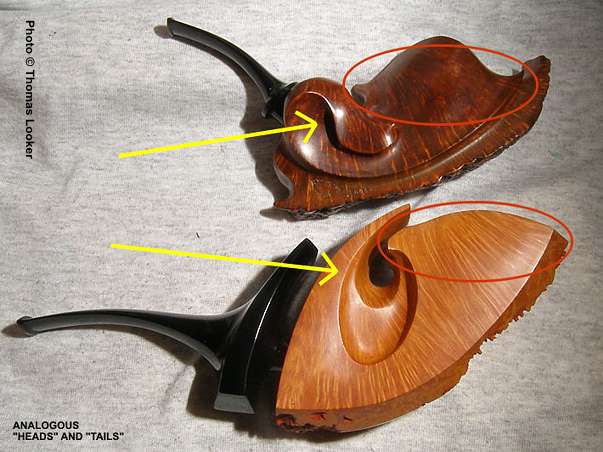
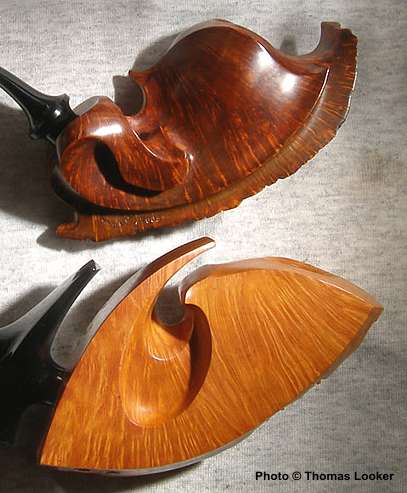
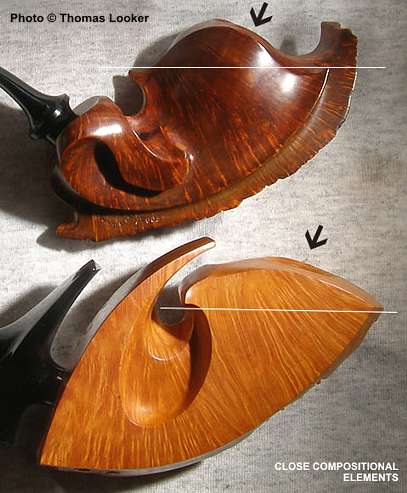
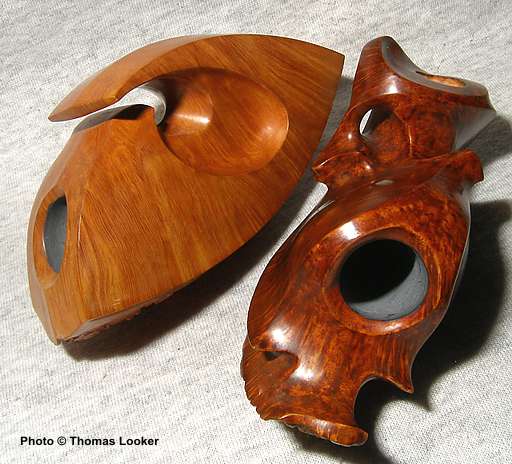
|
|
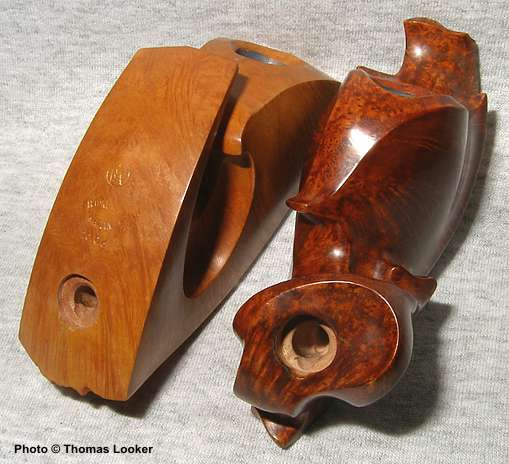
|
|
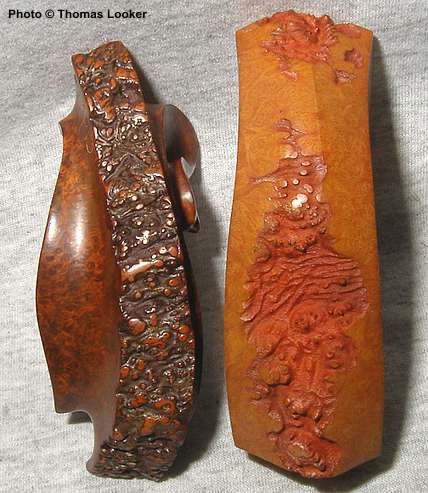
|
The Manta's foot swells gracefully near the front of the "Dancer" (though not as freely as in the true Manta), while the merest ghost of a contour suggests itself on the sides of the Giant Horn if you look at it from certain angles. (Blue arrows.)
Speaking of ghosts, the Manta center-ridge has become little more than a flattened edge flowing down the middle of the horn's base (white dots) like a fault-line (that breaks up occasionally into plateau). But once at the front, this line extrudes in a point that expresses some of the forward thrust of the old Manta "goatee." |
NAVIGATION
END OF GIANT MANTA AND HORN 3